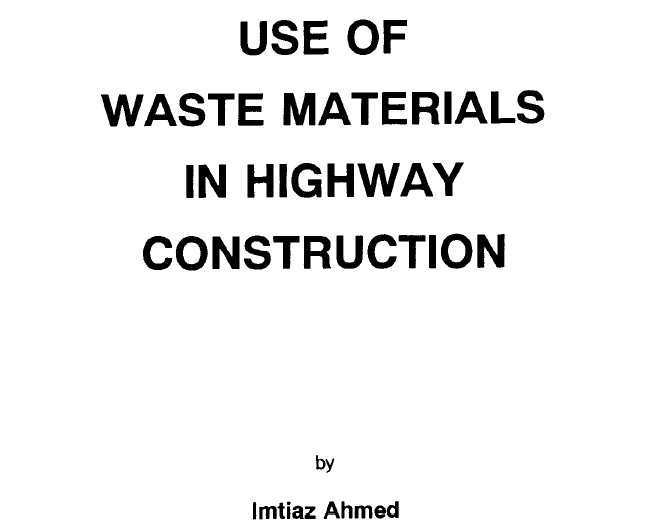his is an overview of the use of waste materials in highway construction. It presents a summary of practices in the use of waste materials in highway construction and the experiences of the US in the technical, environmental, and economic aspects of the various applications of the waste materials. The information presented was obtained from a review of published literature, presentations of research by professionals at different forums, personal meetings with experts, and a questionnaire regarding the use of waste materials to each state highway agency. Public concern is constantly expressed about the vast quantities of useful materials being discarded or destroyed. Legislation to stimulate recycling efforts is in force in a number of states, and is being debated in others. One avenue of approach toward waste reduction is presented here. The book describes the state-of-the-practice in the use of waste materials in highway construction in the US and describes the applications of selected waste materials including: waste tires, waste glass, reclaimed paving materials, slags and ashes, building rubble, sewage sludge, and incinerator residue. An evaluation based on technical, environmental, and economic factors indicated that reclaimed paving materials, coal fly ash, blast furnace slag, bottom ash, boiler slag, steel slag, and rubber tires have significant potential to replace conventional materials for various applications in highway construction. Specific applications of the waste products and potential problems associated with their usage in highway operations, which must be addressed prior to their extensive use, are also included.





 RAR
RAR
